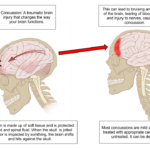TENNIS ELBOW: UNDERSTANDING THE CONDITION AND ITS TREATMENT
Tennis elbow, also known as lateral epicondylitis, is a painful condition that affects the outer part of the elbow. It is a common injury among tennis players, hence the name, but can occur in individuals who engage in repetitive arm movements, such as typing, painting, or manual labor. In this article, we will discuss the anatomy, biomechanics, causes, prevention, and physiotherapy treatments for tennis elbow.
ANATOMY AND BIOMECHANICS
The outer part of the elbow is composed of the lateral epicondyle, which is a bony prominence. This bony prominence serves as the attachment site for several forearm muscles and tendons, including the extensor carpi radialis brevis (ECRB) tendon. The ECRB tendon is responsible for extending the wrist and is often affected in individuals with tennis elbow.
When repetitive arm movements are performed, the ECRB tendon and the surrounding structures experience increased stress and strain, leading to microscopic tears in the tendon fibers. This results in inflammation, pain, and weakness in the affected area.
CAUSES OF TENNIS ELBOW
Tennis elbow is caused by repetitive stress and strain on the forearm muscles and tendons, which can lead to microscopic tears and inflammation. The condition can also be caused by a single, forceful arm movement or by overuse of the forearm muscles and tendons. Additionally, age-related degeneration, arthritis, and bone spurs can also contribute to the development of tennis elbow.
PREVENTION TIPS
To prevent the development of tennis elbow, it is important to follow the following tips:
· Warm-up before engaging in physical activity or manual labor
· Use proper technique when performing repetitive arm movements
· Take frequent breaks during repetitive tasks
· Avoid excessive arm movements or overuse of the forearm muscles
· Strengthen the forearm muscles to improve their endurance
· Use proper ergonomics to reduce stress and strain on the forearm muscles and tendons
PHYSIOTHERAPY TREATMENT FOR TENNIS ELBOW
Physiotherapy is an effective treatment for tennis elbow, and can help to reduce pain, improve strength, and restore function to the affected arm. The following physiotherapy treatments may be used to treat tennis elbow:
Manual therapy – This includes manual stretching and massaging of the affected area to reduce pain and improve mobility.
Chiropractic manipulation and osteopathy – These techniques use manual adjustments to improve joint mobility and reduce pain.
Myofascial releases – This involves releasing tight and painful muscles and fascia to improve range of motion and reduce pain.
Posture correction and posture correction exercises – These techniques help to improve posture and reduce stress and strain on the affected arm.
Ergonomics tips to prevent posture corrections – This includes tips on proper posture, workstation setup, and arm positioning to reduce stress and strain on the affected arm.
Muscle energy technique – This involves using the affected muscle to improve its strength and flexibility.
Joint mobilization – This technique involves gently moving the affected joint to improve mobility and reduce pain.
Strengthening exercises – This includes exercises to strengthen the forearm muscles and improve their endurance.
Range of motion exercises – These exercises help to improve the range of motion in the affected arm and reduce pain.
Electotherapy modalities – This includes the use of electrical stimulation to reduce pain and improve muscle strength.
In conclusion, tennis elbow is a common condition that affects individuals who engage in repetitive arm movements. Physiotherapy is an effective treatment for tennis elbow, and can help to reduce pain, improve strength, and restore function to the affected arm.
A combination of manual therapy, chiropractic manipulation and osteopathy, myofascial releases, posture correction and posture correction exercises, ergonomics tips, muscle energy technique, joint mobilization, strengthening exercises, range of motion exercises, and electotherapy modalities may be used to treat tennis elbow.
It is important to seek treatment from a physiotherapist if you are experiencing symptoms of tennis elbow, as early intervention can help to prevent the condition from becoming chronic and debilitating. Your physiotherapist will conduct a thorough assessment of your condition, and create a personalized treatment plan that is tailored to your specific needs and goals.
In addition to physiotherapy, it is important to follow the prevention tips outlined in this article to reduce the risk of developing tennis elbow. This includes warming up before physical activity or manual labor, using proper technique when performing repetitive arm movements, taking frequent breaks during repetitive tasks, avoiding excessive arm movements or overuse of the forearm muscles, strengthening the forearm muscles, and using proper ergonomics to reduce stress and strain on the forearm muscles and tendons.
If you are experiencing symptoms of tennis elbow, don’t hesitate to seek treatment from a physiotherapist. With the right combination of treatments, you can reduce pain, improve strength, and restore function to your affected arm.







